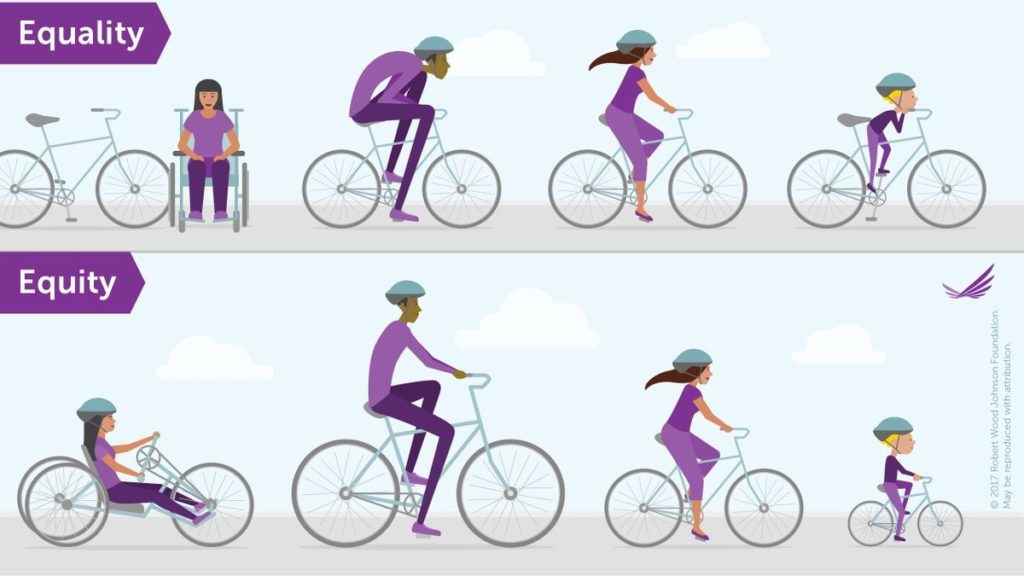Back to: Ensuring Cultural and Linguistic Competence
We are all likely familiar with the critically important non-discrimination policies included in the policies and procedures of many workplaces and service agencies. These policies usually indicate the various groups of individuals that the agency promises to treat fairly, as well as a commitment to taking allegations of discrimination seriously. For systems of care, cultural competence is a core value that should result in, among other things, upholding these non-discrimination statements. But how can a local community know if their system of care is holding up these values of cultural competence and non-discriminatory practices?
Particularly when an organization’s workforce consists mostly of one demographic (for example, women who are White, straight, middle class, Christian, native English speakers, and do not have a disability), the default for that organization as a whole may be to only take into account the needs of individuals who fit that same demographic unless intentional steps, including integrating youth and family voice, are taken to change this default. But how can those involved with an organization or larger system of care know if youth and families are being served in a culturally and linguistically competent (CLC) manner?
In order to begin to answer this question, it is important to understand health equity and how it differs from the concept of equality. Equality speaks to the quality of being equal:1 that all persons are of equal worth and value. Health equity, however, is defined as the attainment of the highest level of health for all people.2 That is to say that equality promotes the same treatment for all people, while the concept of health equity promotes the use of resources in a way that will result in the highest level of health possible for all people.
Both the concept of equality and equity assume equal value of human beings, but truly providing behavioral health services that serve the needs of all… requires a holistic understanding of each person’s needs.
Though it is common in U.S. society to hear talk of equality, health equity may be a less known term. The difference between attitudes of equality and equity in institutions can create vast differences in outcomes for minority populations. While equality assumes that treatment approaches should be the same for all people, as the value of individuals is equal, discussions of equity recognize that different approaches may be appropriate in a diverse society where the real life experiences and needs of individuals may not fit into one overarching mold that is reflective of the experiences of the majority population.
Both the concept of equality and equity assume equal value of human beings, but truly providing behavioral health services that serve the needs of all, regardless of race, ethnicity, religion, color, sex, age, national origin or ancestry, language, genetic information, marital status, parental status, sexual orientation, gender identity and expression, or any other marginalized status, requires a holistic understanding of each person’s needs. As systems tend to be created in a way that benefit those who held (and may continue to hold) substantial power at the formation of the system, ensuring equity requires a purposeful evaluation of the outcomes from a particular system among different groups of people.

When professionals, organizations, and larger systems provide equitable services, they recognize that some populations may need a special focus in order to ensure that no group is being underserved. In this picture, the different types of bikes that best meet each person’s needs can symbolize many things: time, linguistic assistance, disability access, attention to communication style, specialized training, etc.
Providing services in a way that is culturally and linguistically competent will contribute to a program, organization, or system that is equitable. If our evaluation of outcomes determines that there are disparities or if the client population shows a disproportionality from the larger community population, it is a strong indicator that there is work to be done in the area of cultural and linguistic competence.
- Equality. (2016). Dictionary.com.
- U.S. Department of Health and Human Services, Office of Minority Health. National Partnership for Action to End Health Disparities. The National Plan for Action Draft as of February 17, 2010 [Internet]. Chapter 1: Introduction.